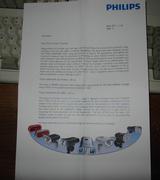ECE r113 bicycle lighting rules (E-bike)
Not sure if the ECE rules are freely available, but I quickly found an English version of ECE R113 on the web (I had already found it in German long ago) and you can have a look too.
Update 2020-2-14: The ECE rules are freely available after all, only hidden by the unclear UN website... A reader who read my criticism of behaviour by a few moderators on cpf (see my analysis of the stupidity there HERE), sent me a link for ECE R101-120 and then I had a closer look at the UN website and found how to navigate it and find the rest of the rules (without relying on direct URL manipulation) which also showed the links were not hidden links. The following shows you where to download them all:
First go to https://www.unece.org/trans/main/welcwp29.html, then on the left menu click on "Agreements and Regulations", then on "UN Regulations (1958 Agreement)", then on "UN Regulations (Addenda to the 1958 Agreement)" and then finally you will see the choice for:
Regs 0-20
Regs 21-40
Regs 41-60
Regs 61-80
Regs 81-100
Regs 101-120
Regs 121-140
Regs 141-160
Here is an information leaflet from Philips from 2011-11-22 about its ebike headlamp:

It says that the lamp conforms to ECE R113 class C and can be used as a low beam by any 2 wheeled vehicle at any speed. So I just need to look for class C headlamps to know what e-bike headlamps need to conform to? Or did Philips set out to produce something more than just an ebike lamp from the start? What are other ebike lamps validated as? Need to look into this...
It's a pity I never got my hands on one of these ebike lamps to see how good the light distribution is and to see what the light above the horizon does for e.g. lighting up traffic signs.
From the r-113 document, r113 means 'regulation # 113'.
A. Regulations (definitions/prescriptions)
Starting to read: ECE is about headlamps with exchangeable bulbs, for motorised vehicles. Somewhere else on the web I found that LEDs are considered exchangeable bulbs in ECE rules, I presume the exact LED type is specified, possibly also with the PCB used in those (car) headlamps?
There are 4 categories of headlamp, A,B,C,D
4. Approval
B. Technical requirements
5. General rules
Bulbs must be approved according to regulation 37 (so they mean ECE R37?).
Headlamps of categorie A,B: any bulbs may be used as long as the headlamp produces less than 600 lm.
Headlamps of categorie C,D: any bulbs may be used as long as the headlamp produces less than 2000 lm.
What are class A,B,C,D? In the table for class C,D are mentioned D > 125cc, C ≤125cc , so it seems motorcycles... Are all vehicles in R113 are 2 wheeled? I saw R112 mentioned on the web which is presumably for cars and non-symmetrical light.
6. Illumination
Measurement is done at 25 m.
Now we come to the interesting bits:
Pictures of the points/lines etc. to come.
Note to compare to StVZO: 1. StVZO allows for bicycles at most 2.0 lux above the horizon at 10m, so the lux values should be multiplied with a factor of (25m/10m)^2= 6.25. So 0.32 lux as below, conforms to 2.0 lux in case of bicycles... 2. StVZO allows for cars at most 1.0 lux above the horizon (measured at 25 m as in ECE).
Class A:
- ≤0.32 lux above the line H-H
- ≥1.28 lux on the line 25L-25R
- ≥0.64 lux on the line 12,5L-12,5R
Class B:
- ≤0.7 lux above the line H-H
- ≥1.5 lux on the line 50L-50R, except on 50V
- ≥3 lux on point 50V
- ≥3 lux on the line 25L-25R
- ≥1.5 lux for each point in zone IV
Class C&D: Fooking hell! They went crazy in defining a ridiculous number of test zones/points! This will take some time to digest. Perhaps it looks worse than it is :)
For class C&D: Light distribution must be as smooth as possible in zones 1,2,3.
6.3.2.1 Minimal lux values: class B,C: 32 lux, class D: 51.2 lux, Maximal lux values: class B: 240 lux, class C,D: 180 lux.
Further analysis in progress.
Last modified: 2015-2-2
